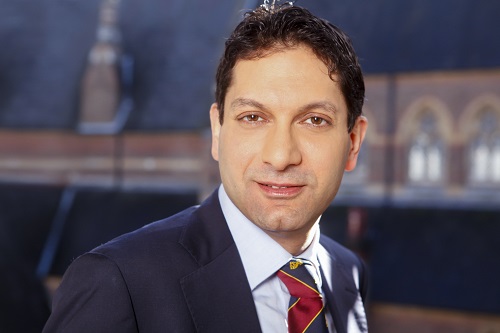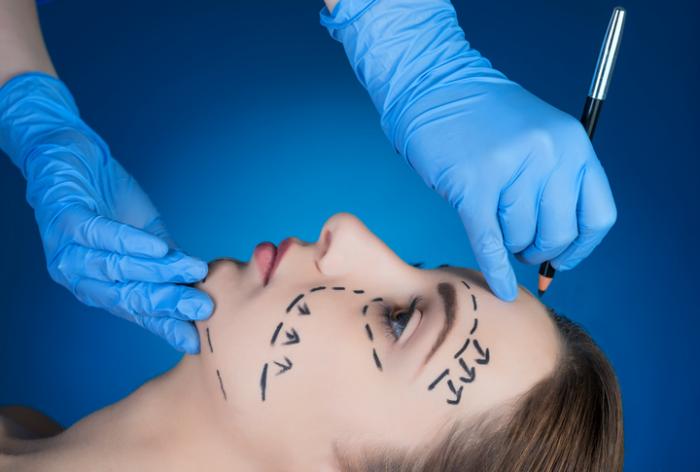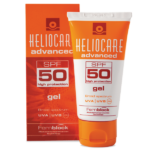face & Neck lift
"Whenever you are creating beauty around you, you are restoring your soul"
Neck and Face Lift: All you need to know
What is a facelift?
As we get older, the skin loses the elasticity and the underlying tissues like fat compartments also sag down due to weaknesses in the ligaments that support them. This leads to sagging and wrinkles. A facelift, also known as rhytidectomy, is a surgical procedure that lifts, tightens these facial tissues and removes the excess skin.
Traditional facelifts is only focused on the bottom two-thirds of the face and often the neck. It can be combined with a browlift or eye lid surgery (blepharoplasty), or fat transfer to restore volume.
People get facelifts for a lot of different reasons:
- Ageing
- Asymmetries in the face
- Volume restoration
- Removal excess skin
- Improve skin wrinkles
- Jowl lifting
Who is a Good candidates for facelifts?
- Healthy individuals who don’t have medical conditions that can interfere with wound healing.
- Those who don’t smoke. Smoking impairs wound healing.
How much does a facelift cost?
Our prices are below, and range from £2999 to £6999. The price of a facelift varies if it is combined with a necklift, if it is a mini or a full facelift or if other procedures are done at the same time. Prices include all the pre-operative and post-operative care.
How is a facelift procedure done?
There are many ways to perform a facelift. An incision is made in the hairline near the temples that continues down to infront of the ear, around the earlobe and back towards the scalp.
After lifting the skin, fat is either restores or removed if in excess, the deep layer under the skin called (SMAS) is tightened with sutures usually, and then the excess skin is removed.
If there’s minimal skin sagging, a “mini” facelift may be done. This involves shorter incisions.
If a neck lift is needed, it can be accessed through the same incision, however sometimes another incision is needed under the chin to correct the platysmal bands that cause what is called a “turkey neck”.
The skin is often closed with a combination of non-dissolving and dissolving sutures. Non-dissolving sutures need to be removed in 7 days. You’ll often have a surgical drainage tube after surgery as well as bandages wrapping your face.
How long is the hide away time for a facelift or a necklift?
The hideaway time for a facelift and necklift is between 10 to 14 days. Arnica cream can minimize bruising after a facelift. Cold compressions reduce swelling after a facelift.
Are there any risks or side effects associated with a facelift or necklift?
There are risks to any medical procedure, including a facelift. Risks:
- Anaesthetic risk
- bleeding
- infection
- cardiac events
- blood clots
- pain or scarring
- hair loss at the incision sites
- prolonged swelling
- problems with wound healing
What to expect after a facelift
After the surgery, you will be given pain medications and antibiotics to take for a few days. Expect a degree of swelling, bruising and pain. This is normal. If anything you are worried about you should contact us.
We will arrange the follow up to remove the sutures and the dressings.
How much time off work or exercise do I need after a facelift or a necklift?
Typically, give yourself about two weeks off work. You should be resuming a normal level of daily activity in around 5 days. For more strenuous activity, like exercise, wait about four weeks.
Should I have a non-surgical or a surgical facelift?
The decision whether to have a non-surgical or surgical facelift or necklift depends on several factors. The most important being your expectations, the degree of laxity, the underlying facial support and the amount of downtime you can afford to have.
Steps We Take to Prepare for a Facelift or Necklift Procedure
- Stop smoking 4 weeks before the facelift procedure
- Discontinue use of asprin, anti-inflammatory pain killes, herba supplements to reduce the risk of bleeding or bruising 2 weeks before the procedure
- Ensure you have support at home after the procedure
- Ensure you have one week of food shopping at home before the procedure
- Wash yuor body and hair the night befoe the procedure
- Remove any makeup, piercings, nail polish, fake nails, or hair extensions before the procedure
Rhytidectomy
A facelift, officially called a rhytidectomy, is a procedure to tighten and lift the skin of the lower face.As we age a number of changes take place with our face: there are changes in skin quality and elasticity, loosening of ligaments, volume loss and displacement of fat and glands. As a result, we develop wrinkles, get hollowness in the temple and cheeks and under eyes and the main bulk of the cheek volume also moves downwards with gravity..


Benefits of face lifts
Face lifts are usually done for aesthetic purposes to reverse the signs of ageing. It has the benefit of removing excess skin, tightening underlying laxity and improve on existing wrinkles.
The procedure can also be of benefit for those with facial asymmetry following trauma or facial nerve paralysis.
The procedure
Rhytidectomies can be done under local anaesthetic, sedation or general anaesthetic depending on the patient and what needs to be done. It can be combined with neck lifts, fat transfers or liposuction. It is usually a day case procedure. You might be asked to wear a garment afterwards for 1 week.
Watch how a facelift is done

Start with a virtual consultation
Options
We offer non-surgical and surgical face lifts and neck lifts. Non-surgical options include our signature liquid facelift using Juvederm Hylauronic acid fillers and thread lifts using Silhouette Soft coned threads.
Our surgical facelifts include the limited scar facelift, mini-facelift and the full facelift. Popular added procedures include fat transfers to the face, blepharoplasty, brow lift, neck lift and liposuction to the neck. Some of these can be done under local anaesthetic or sedation.
After Care
Face lift surgery is a delicate operation and it is important you rest after surgery even if you feel fine. Stay hydrated and avoid stresses and straining. Stay away from smoking. If you are asked to wear a garment please wear it for 7 days. After 7 days we will conduct a wound review and remove any sutures in place.
Arnica cream helps reduce bruising and cool packs help reduce swelling after facelift surgery. Suncream afterwards helps scar fade quicker.
HealthFormation

How long does facelift last for
Non-surgical treatments will last up to 1 year, mini-facelifts up to 4 years and a full facelift for 6 years .
what is hide away time
This very much depends on the type of facelift but apart from the liquid facelift, 7-10 days is reasonable estimate.
medications & Vitamins
You will need to stop Asprin and Ibuprofen 14 days before surgery and all vitmains 30 days to reduce bleeding risks.
Choose Your treatment
Reviews
What our patients say
Frequently asked questions
There are a number of different types of facelifts that can be done depending on how advance the case is.
Liquid facelift: this uses dermal fillers to achieve a lift. This is ideal for those with not much laxity of skin, and have loss of volume. Results last up to 18 months.
Vampire facelift: this technique uses PRP as it’s main ingredient. PRP is made from your own blood and processed to get an extract that can be injected in the face. It can be combined with a dermaroller to maximise effects. Results last for 6 months but can be easily repeated with no downtime.
Thread Lift: using Silhouette Soft threads, the face and neck are lifted using these coned threads. The process is painless and results will last up to 18 months.
One-stitch facelift: using a small incision in the temple and behind the ear, it is possible to lift the face using these access points and apply one suture in each position.
Mini facelift: involves removal of skin from the face and tightening of the underlying tissues. The extent of a mini procedure is much less than a full one. This means that not all patients may be suitable for this and the results will be more subtle. The mini facelift can be performed under local anaesthesia and as a day case procedure. The full lift procedure will require a general anaesthetic.
A full MACS facelift is a procedure that involves raising the skin of the face to near the nasolabial fold, then tightening the underlying SMAS layer using sutures. The skin is then redraped and any excess skin trimmed and the skin closed. The scars of a facelift are usually well hidden in the hairline and around the ear.
People enquire about facelifts at different stages of their lives. Younger patients may need different approaches to the older patients. Only after a consultation with us will we be able to advise you about the best approach for you.
Facelifts alone achieve good results, however to even enhance results further, other procedures such as peels, Botox injections and PRP can give better final skin quality. In addition protecting your skin using an SPF and using a active serum will make your overall skin quality better.
The most common side effects include bruising and swelling.
Bleeding
Bleeding may occur after the procedure and it is common to have a few drops from the wound after the procedure. Sometimes the bleeding can be more and result in a collection underneath the skin, this is a haematoma. This may recover further surgery to remove the blood collection.
Facial nerve injury
Extremely rarely, but the most dreaded risk of a facelift operation. Temporary weakness of facial muscle movements can occur, but rarely this is permanent.
Infection
Infection can result in redness and swelling. This may also result in discharge or even wound breakdown.
Under or over-correction
If too much skin is removed this may result in asymmetry. If too little skin is removed then you may have residual skin excess.
Asymmetry
Most patients will have some degree of asymmetry, which is completely normal. This may also occur after surgery or you may become more aware of asymmetries after the procedure.
Scarring
You will have scarring from the facelift procedure, which will be permanent. The scar is normally in the natural crease of the face, running from the temple, hugging the ear and then behind to the hairline again. Occasionally, scars can become raised and thickened, also referred to as hypertrophic or keloid.
Seroma
Some patients will experience a collection of fluid under the skin that requires drainage.
If you had fillers or threads, it is safer to wait a year after they had been inserted to allow them to degrade. Operating with them in place increases slightly the risk to complications.
do you have more questions about facial surgery?





Get in Touch
+44 800 772 3501
hello@cosmeticaestheticplasticsurgery.com

